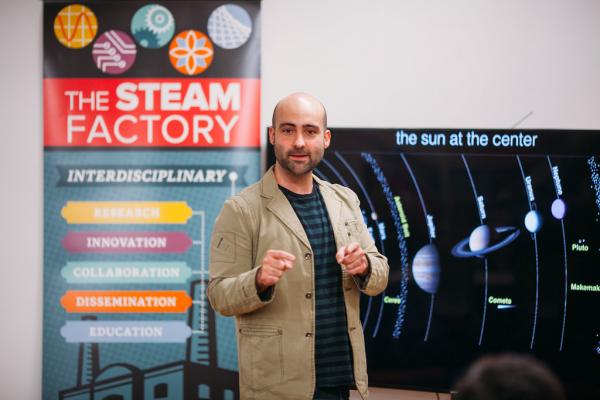June 29, 2017
STEAM Factory Member Paul Sutter Explains the Cosmic Distance Ladder on Latest Episode of "We Don't Planet"

This article was written by Paul Sutter and originally appeared at: https://www.space.com/37212-we-dont-planet-cosmic-distance-ladder.html on June 23, 2017.
Check out the full episode here.
Measuring truly astronomical distances is a challenging task, but it can be accomplished by leveraging one distance measure off another to build up to ever-farther reaches.
At the bottom rung of the ladder is simple parallax — using the apparent motion of stars as the Earth views them from different vantage points over the course of its orbit to directly calculate their distances with trigonometry.
But that only works for relatively short distances — short enough to actually detect the wobble from season to season. For farther distances, another method can be used: A certain kind of pulsating star called Cepheid variables have a very tight relationship between their intrinsic brightness and the period of their variability. By comparing the true intrinsic brightness to their perceived brightness, a little math reveals the distance.
Cepheid variables allow us to measure distances to nearby galaxies, but at too great a distance, astronomers can’t accurately determine their variability. Past that, supernovas become useful indicators. Specifically, Type 1a supernovas, which have a close relationship between their intrinsic brightness and the duration from initial explosion to fade-out. Supernovas are relatively rare but are incredibly bright: outshining an entire galaxy, they can be seen from across the observable universe.
No one method allows us to measure distances from the nearest star to most distant galaxies, but one technique can be used to bootstrap to another where they overlap. Like a ladder.
"We Don't Planet" is hosted by Ohio State University astrophysicist and COSI chief scientist Paul Sutterwith undergraduate student Anna Voelker. Produced by Doug Dangler, ASC Technology Services. Supported by The Ohio State University Department of Astronomy and Center for Cosmology and AstroParticle Physics. You can follow Paul on Twitter and Facebook.
